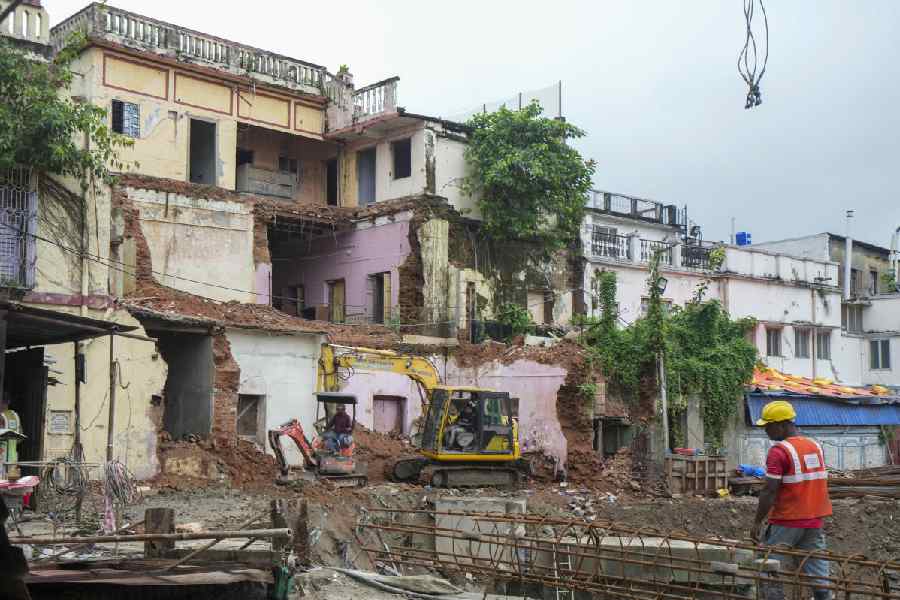President Donald Trump said the United States had reached agreements with Mexico and Canada to in effect close the borders to slow the spread of the virus and would halt all nonessential travel across those borders beginning at midnight Saturday. Wall Street suffered another grim day Friday with the S&P 500 falling more than 4% and the Dow Jones Industrial Average dropping 913 points, closing below where it stood before Trump was inaugurated.
On Capitol Hill, senators worked until late Friday on the framework of a $1 trillion economic stabilization package that is expected to include expanded unemployment benefits for workers affected by the virus. The talks broke off about 10:45 p.m. without any agreement, although Democratic and Republican negotiators said they had made significant progress on a number of issues and would continue to work through the weekend. Negotiations in the Senate over an aid plan are expected to continue through the weekend.
The coronavirus pandemic has sickened more than 254,500 people in at least 154 countries. As of Friday afternoon, at least 10,472 people had died, more than half of them outside mainland China.
The cascade of statewide restrictions began Thursday night when Gov. Gavin Newsom of California declared a broad stay-at-home order for his state’s 40 million residents, a directive that included exceptions for transportation workers, grocery stores, banks and laundromats, among others.
“Home isolation is not my preferred choice,” said Newsom, pleading with Californians to comply in order to save lives.
A large number of state workers — firefighters, police officers, prison guards — have been deemed essential and are exempted from the stay-at-home order, Newsom said. But his office was still assessing and negotiating with union officials to determine how many nonessential state employees would be allowed to work remotely.
States have continued to grapple with differing strategies to contain the virus. Washington state, which has been at the forefront of the outbreak, introduced some of the strongest restrictions this month but has yet to adopt formal stay-at-home orders for the whole state. Gov. Jay Inslee said his office was continuing to evaluate that option but he cited potential economic impacts as a factor in the decision.
He criticized those who may still be leaving their homes for social reasons and issued his own command: “Stay home unless it’s necessary to go out.”
The stricter requirements were coupled with an unusual loosening of other rules around the nation. Chicago has already stopped issuing parking tickets and collecting fines. The federal government postponed a deadline for filing tax returns to July 15 from April 15. Trump on Friday said federal student loan payments would be paused for at least 60 days. The governor of Nebraska ordered a 30-day extension of the deadline to renew driver’s licenses.
Americans, barely adapting to their new lives under the coronavirus outbreak, struggled to understand what the shelter-in-place orders would mean in practical terms, and which businesses would be allowed to remain open.
Cuomo’s action Friday on restricting nonessential personnel came days after the governor had also ordered state and local governments to let at least 50% of their workers stay home. And while exactly who was considered essential was left up to local leaders and heads of state agencies, officials say many local governments were only requiring law enforcement, public safety and public works employees to report to work as usual.
“These provisions will be enforced,” Cuomo said at a briefing in Albany. “These are not helpful hints.”
Cuomo’s newest restrictions take effect Sunday night.
But many of the decisions for what is and is not essential will be open to interpretation, and across California, cities were struggling Friday to determine what had primacy: the statewide order or the ones issued by counties and cities.
America plunged into a deeper state of disruption and paralysis Friday as New York and Illinois announced a broad series of measures aimed at keeping tens of millions of residents cloistered in their homes, following similar actions by California and a patchwork of restrictions from coast to coast.
The new, more stringent directives, in some of the country’s most populous states, were intended to slow the spread of the coronavirus that has swept across the country, sickening more than 17,000 people and claiming at least 214 lives. By the end of the weekend, at least 1 in 5 Americans will be under orders to stay home, and more states were expected to follow suit.
Increasingly severe shutdowns and restrictions on Americans’ movement — which public experts consider essential to reduce the alarming rate of infection — have turned much of the country quiet. Forty-five states have closed all their schools and the other five have closed at least some of them. Bars, restaurants and other gathering spots have been abruptly shuttered.
In the Bay Area, the first region to get a shelter-in-place order, cities have spent the past week wrestling with the question of what can remain open, and the bureaucracy — or lack of it — for deciding borderline cases.
Grocery stores and pharmacies are obviously essential, but what about bike repair shops, which many people need for transportation, or cannabis dispensaries, whose goods many consider medicine? In Alameda County, which surrounds Oakland, cities have asked the county health department for guidance, which in turn told cities that the decision is left to individual businesses. Thus, some establishments are closing, others are not, and cities — which are already overloaded with issues of public health and safety — are left to decide how to enforce rules that are mostly unclear.
In Los Angeles, an order signed by Mayor Eric Garcetti was explicit in which businesses could remain open, and included cannabis dispensaries, news media outlets, bicycle and auto repair shops, funeral homes and some farmers markets. Gun shops, which have seen a surge in business as the pandemic has spread, will close under the order.
On Friday, Californians kept some semblance of normal routines. In Los Angeles, residents were allowed to walk their dogs or go for a hike in the many canyons and hills around the city. And office workers were allowed to go to their offices Friday and collect their belongings so they could begin working from home. But in a sprawling city where navigating traffic is a daily headache, for days the city has felt empty, its famous freeways uncluttered, with drivers able to get almost anywhere in less than a half-hour.
Officials said they did not expect to be heavy-handed on enforcement. In Los Angeles, the police can enforce the order by issuing misdemeanor tickets, but the authorities say they are counting on residents to abide by the rules out of social pressure. Garcetti said any residents who see someone violating the order should take it upon themselves to ask the offender to comply, although he added he is not looking for “tattletales around the city.”
“It’s a very light touch,” he said. “This is on 10 million people to self-enforce.”
New York state has become the center of the outbreak, as its confirmed coronavirus cases have jumped to more than 7,000 and health officials have flagged with urgency a looming shortage of hospital beds and equipment. With 6% of the U.S. population, the state accounts for more than one-third of all confirmed cases in the country.
Gov. Andrew Cuomo of New York on Friday announced what he called “the most drastic action we can take,” essentially ordering the nation’s largest city and the rest of his state into a protective crouch: All nonessential businesses were ordered closed by 8 p.m. Sunday, setting up a stark new reality for some 19 million residents, who were told to stay home as the state went “on pause.”
New York officials have issued a lengthy list of businesses and services that would be allowed to stay open, including nuts-and-bolts governmental duties like code enforcement to more practical concerns like automotive repair, child care and computer support.
Basic functions like grocery shopping, walking the dog and getting medicine or exercise were still to be permitted, but little else in the way of normal life. “We need everyone to be safe,” Cuomo said, acknowledging the severe economic and psychological impact of such an order. “Otherwise no one can be safe.”
New York City’s public transit system would continue to run, but the city it travels through was profoundly transformed from its usually bustling, never-sleep energy: Its restaurants and bars were closed; its schools, museums and theaters dark; and its gaudy central mall — Times Square — quieter than it has been in decades.
Hours after the New York announcement, Illinois followed. Gov. J.B. Pritzker issued an order for the state’s more than 12 million residents to stay home, beginning Saturday at 5 p.m. “For the vast majority of you already taking precautions, your lives will not change very much,” Pritzker said.
The actions taken by the governors are the most robust and far-reaching yet, grinding major cities across the country to a standstill.
Elsewhere in the United States, shelter-at-home rules were not so strict, but they were becoming more so every day — and many businesses and residents were choosing, by choice or by edict, to close up or stay home and take steps to avoid exposure among people.
In Hawaii, Gov. David Ige has issued sweeping directives to close bars and clubs, limit social gatherings to groups of 10 and restrict restaurants to takeout service. He also “strongly encouraged” tourists to postpone vacations for 30 days and mandated the screening of all passengers getting off cruise ships beginning Friday.
On Friday afternoon, Mayor LaToya Cantrell of New Orleans issued a “stay home mandate” for her city. “The more people who stay home the more lives that we will save,” she said.
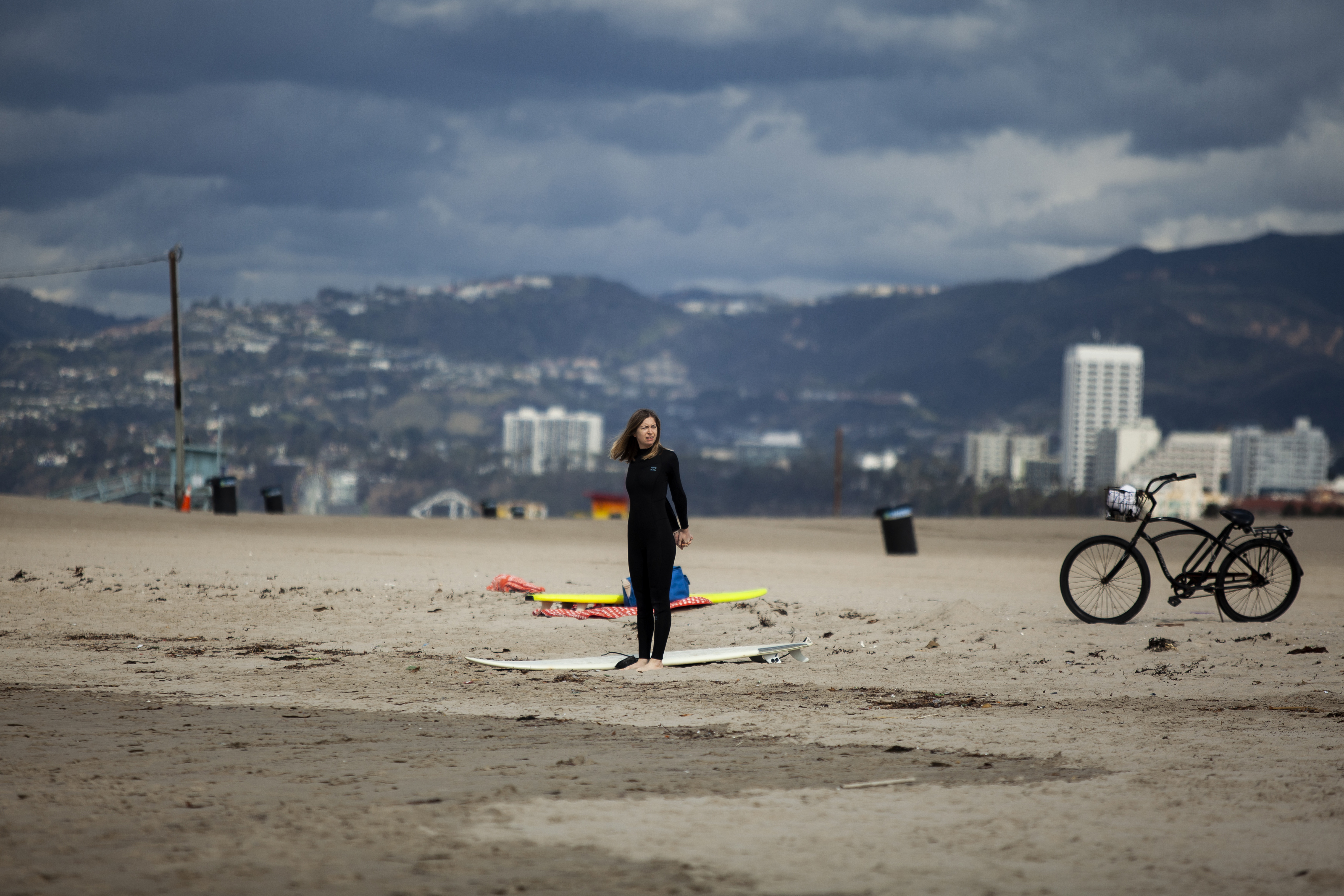
A lone surfer in Venice, Calif., on Friday, March 20, 2020. America plunged into a deeper state of disruption and paralysis on Friday as New York and Illinois announced a broad series of measures aimed at keeping tens of millions of residents cloistered in their homes, following similar actions by California and a patchwork of restrictions from coast to coast. (Jenna Schoenefeld/The New York Times)

As of Wednesday at 5 p.m., Eastern, at least 7,837 people across all the states, Washington, D.C., and three U.S. territories have tested positive for the coronavirus, and at least 140 patients with the virus have died, according to a New York Times database. New York Times
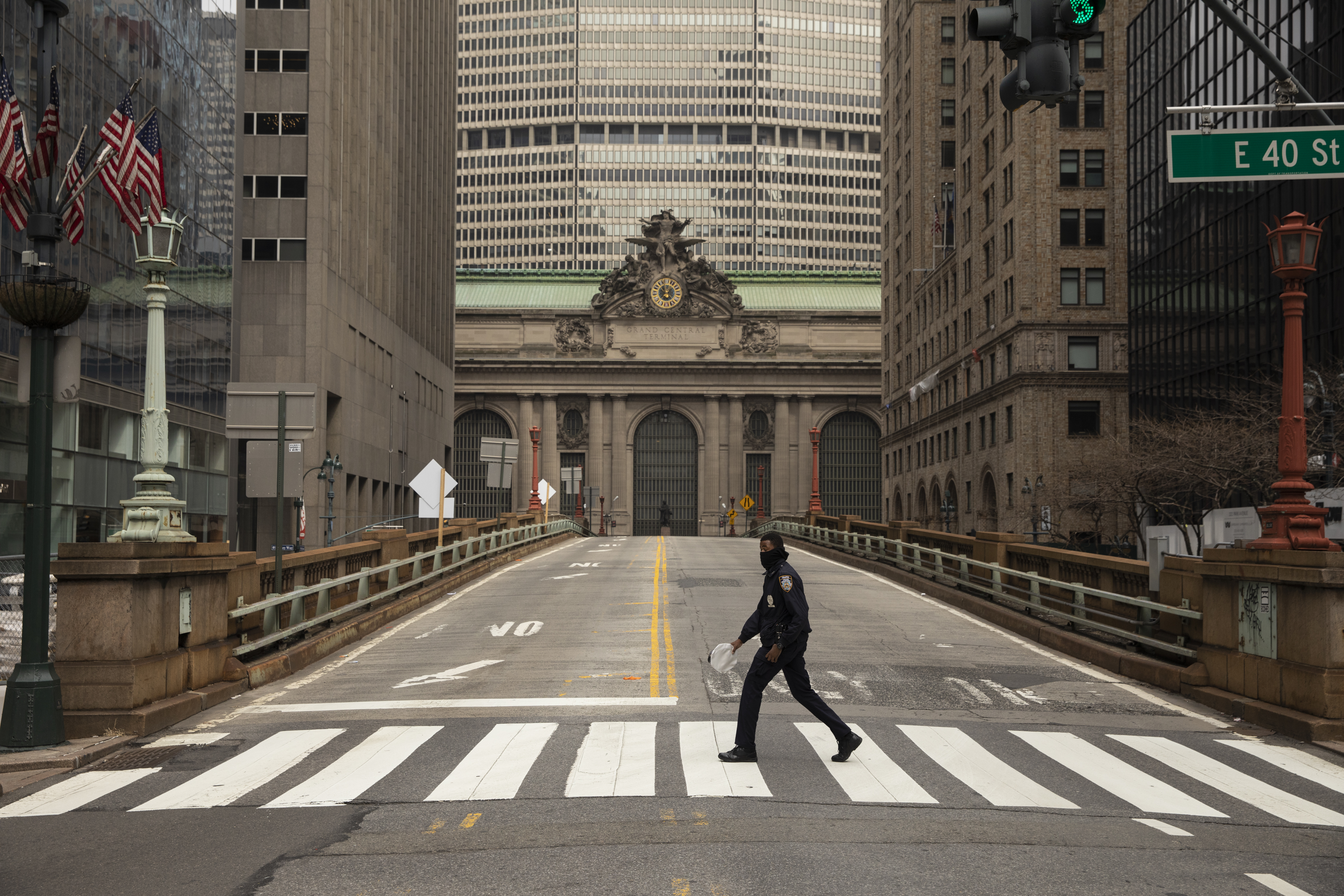
Grand Central Terminal in Manhattan on Friday, March 20, 2020. New York’s governor has sharply limited outdoor activity across the state, including by ordering nonessential businesses to keep all of their workers home, in the wake of the coronavirus. (Benjamin Norman/The New York Times)
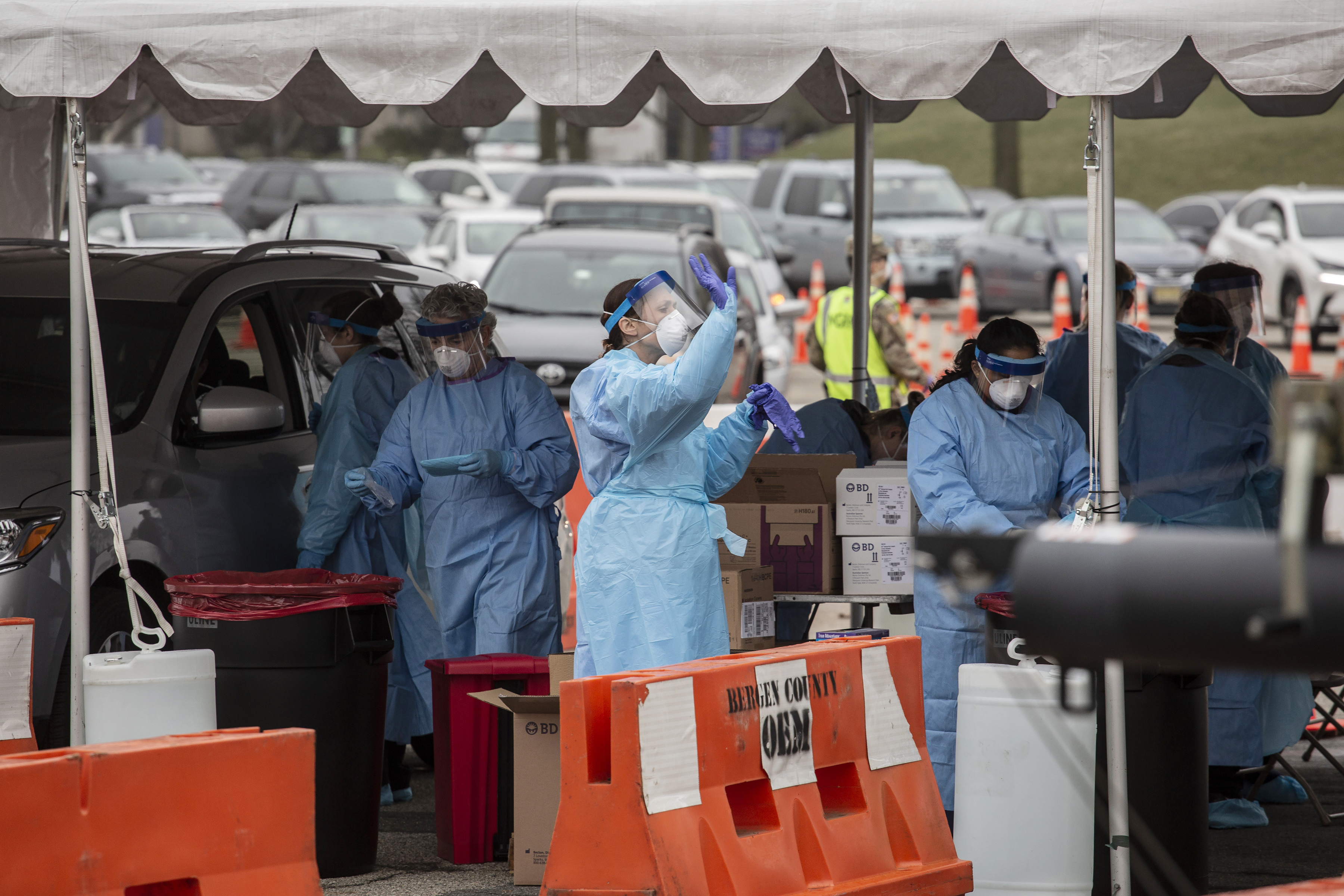
Medical workers at the drive-through coronavirus testing site at Bergen County Community College on Friday, March 20 2020, in Paramus, N.J. (Bryan Anselm/The New York Times)
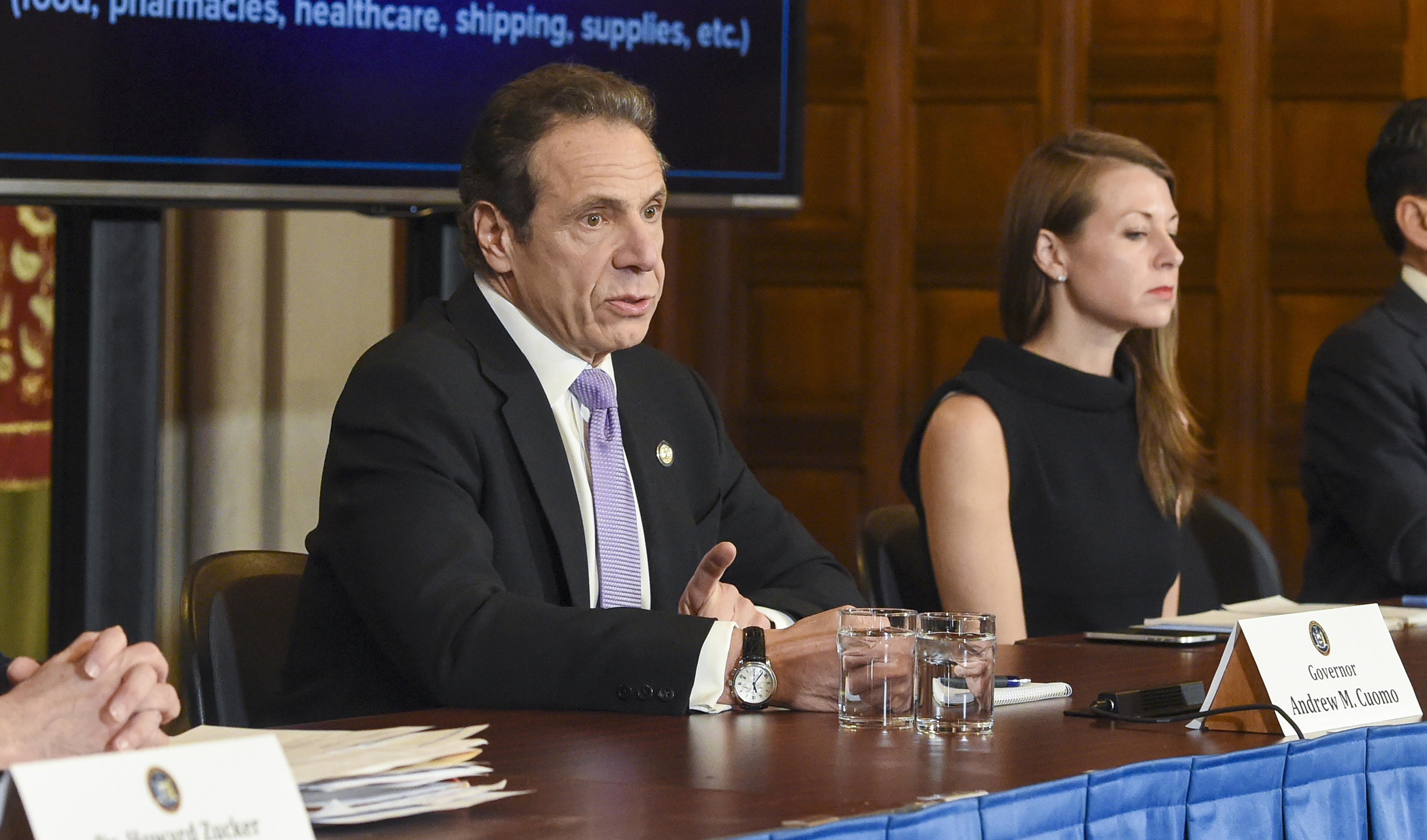
New York Gov. Andrew Cuomo, delivers his daily briefing on the coronavirus, in Albany, N.Y., Wednesday, March 18, 2020. Cuomo, on Friday issued a sweeping edict meant to compel New Yorkers to stay indoors as much as possible, ordering all nonessential businesses to keep their workers home as the number of confirmed coronavirus cases in the state raced toward 8,000. (Cindy Schultz/The New York Times)







